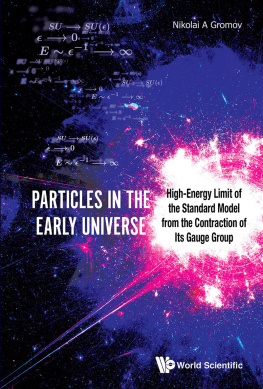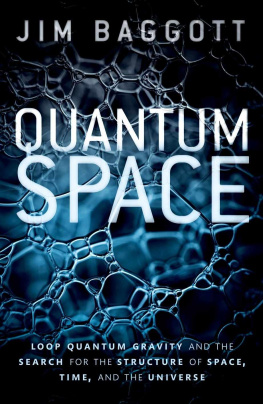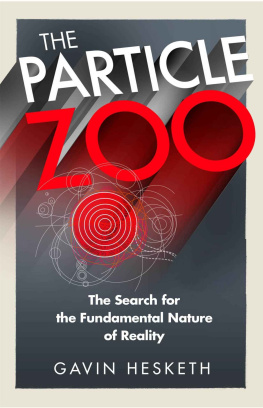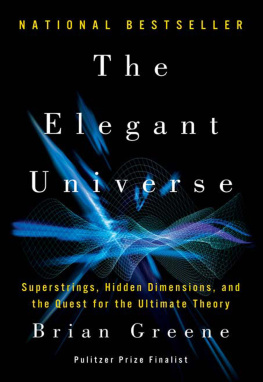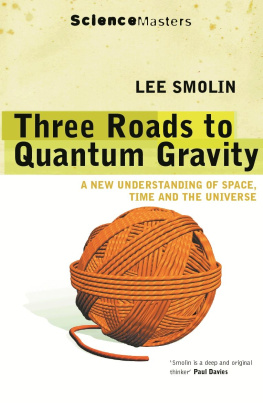The First Second of the Universe
A String Theory Approach
Gerald W. Scanlon
ALSO BY GERALD W. SCANLON
Gods Particle and Elements: Core of the Universe. A Theory of Everything
Higgs Field Unveiled. Gods Field at Creation
Gods Atomic Model Unveiled. A New Proposal
Fundamental Forces at Creation
Fundamental Particles at Creation
The Expanding Ten-Dimensional Universe
Waves at Creation
A Theory of Everything
Revelations of the Quantum Scrolls. The End of Time
Copyright 2017 Gerald W. Scanlon
All rights reserved. No part of this publication may be reproduced, distributed, or transmitted in any form or by any means, including photocopying, recording, or other electronic or mechanical methods, without the prior written permission of the publisher, except in the case of brief quotations embodied in critical reviews and certain other noncommercial uses permitted by copyright law. Email: jerryscan@yahoo.com
Contents
Chapter 1: Periodic Table Linked to Fundamental Forces
The Greek philosopher and scientist Aristotle wrote a principal which states nature operates in the shortest way possible . Centuries later, the English Franciscan friar and scholastic philosopher William of Ockham echoed the same principal when he wrote the simplest explanation for some phenomenon is more likely to be accurate than more complicated explanations . This principal is known as Ockhams razor.
A simple explanation of the first second of the universe will be presented in this book. Regardless of the simplicity, it has the potential to fully explain and link together all physical aspects of the universe and be the ultimate theory.

The elements on the periodic table provide the key to the simple explanation of the origin of the universe. So lets begin with a look at the periodic table. Figure 1 shows the 118 known elements placed on a table which is divided into 7 different periods. Each period ends with a stable noble gas. Each element is displayed with its symbol and atomic number. For example, the element hydrogen has a symbol of H and an atomic number of 1. The atomic number tells the number of protons in the nuclei and the number of electrons orbiting the nuclei.

The elements can be arranged on the periodic table and placed in different regions called blocks. Figure 2 shows the 118 elements placed in s, f, d, and p blocks. Each block has a different length and its length is shown at the bottom of the figure. The lengths are: s-block= 2; f-block=14; d-block=10; and p-block=6.
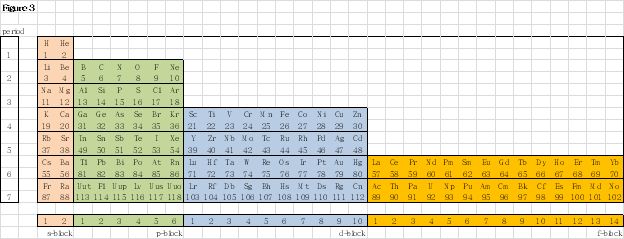
The elements can also be arranged by the lengths of the blocks from shortest to longest. Figure 3 shows the elements arranged by the lengths of the s, p, d, and f blocks. The lengths are: s-block=2; p-block=6; d-block=10; and f-block=14.

In this book, it is easier to look for numerical patterns and construct geometrical figures by using just the atomic numbers of the elements. Figure 4 shows the periodic table with the atomic numbers of the elements.
The periodic table gives information about the 118 known elements. It may surprise you that additional information can also be gathered from it. To glean some of the additional information, we will start by looking at the structure of the table.

Figure 5 shows there are steps on the periodic table. The steps form the sequence of , 2, 2, and 2. The first step is shorter than the others, so lets assume there is a step hidden from our view. A new period or step can be added to make the first step 2.

Figure 6 shows the new period which is added to the periodic table. Two elements are placed in the new period. The first element is called Gods Particle 1 and is given the atomic symbol of P1. The second element is called Gods Particle 2 and is given the atomic symbol of P2. There are now 120 elements distributed into 8 different periods on the periodic table.
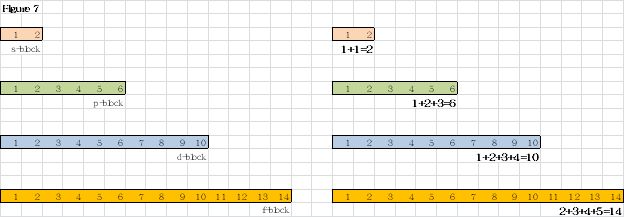
Now, lets look at the number patterns that form the lengths of the s, p, d, and f-blocks. Figure 7 shows the length of the s-block is made with the sum of 1+1; the length of the p-block with the sum of 1+2+3; the length of the d-block with the sum of 1+2+3+4; and the length of the f-block with the sum 2+3+4+5.
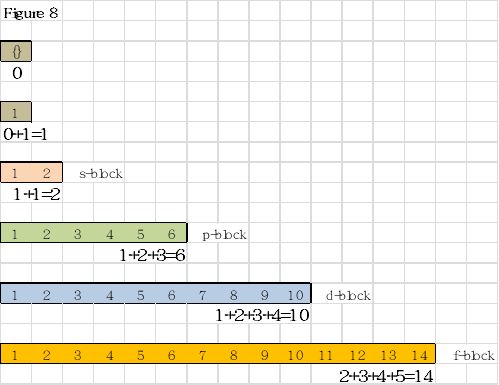
As mentioned earlier, Aristotle wrote a principal stating nature operates in the shortest way possible . If so, nature would have started creating the universe by using blocks with even shorter lengths. Figure 8 shows nature would have started the universe by using blocks with sums of 0 and 0+1.

Additional periods and an additional block can now be added to the periodic table to allow for the sums of 0 and 0+1. Figure 9 shows two additional periods have been added to the periodic table and the two new elements placed in them. The first element is named Alpha, assigned an atomic symbol of A, and placed in period 1 of the table. The second element is named Quantum God, assigned an atomic symbol of QG, and placed in period 2 of the table.
A new block labeled the Alpha block or A-block has also been added to the bottom of the table. The periodic table now has 122 elements, 10 periods, and 5 blocks.
We now have an Alpha point or beginning point of the universe. The universe started at this point or singularity and expanded outwardly creating space and time or spacetime in the process. The four fundamental forces of nature were used to create spacetime.
The four fundamental forces that govern the universe are gravitational, electromagnetic, strong nuclear, and weak nuclear. Gravity is the force of attraction that acts between masses. Electromagnetic is the force that acts between electrically charged particles and produces electricity, magnetism, and light. The strong nuclear force is responsible for holding together the atoms nucleus while the weak nuclear force is involved in radioactive decay.

The four fundamental forces can be linked to the A, s, p, d, and f-blocks. Figure 10 shows the four forces of nature were united at the beginning of time in the A-block. As they spread outward, they began to separate from each other. Each force created a specific block of elements as the new universe was being created. The strong force created the s-block, the electromagnetic force created the p-block, the gravitational force created the d-block, and the weak force created the f-block.
Next page




